
Kirsten McCarthy / Cats.com
Hairballs—also known as trichobezoars (pronounced trike-oh-bee-zohrs)—are considered a normal quirk of being a cat, but hairballs say more about your cat’s digestive health than you might expect.
Chronic hairballs that occur more than once or twice a month can be associated with poor diet, digestive problems, and allergies or skin conditions that cause your cat to ingest more hair than is normal during grooming. In this article, we’ll learn about how hairballs relate to diet and which foods can help to lessen your cat’s hairball issues.
At a Glance: Best Cat Food for Hairball Control To Buy In 2024




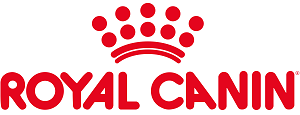
Royal Canin Feline Care Nutrition Hairball Care Thin Slices in Gravy Canned Cat Food
- Added fiber to control hairballs
- High in protein
- Hydrating canned food
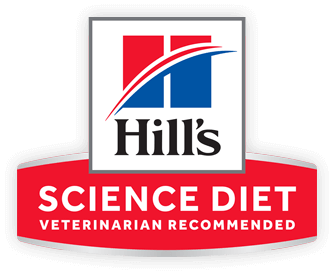
Hill’s Science Diet Adult Hairball Control Chicken Recipe Dry Cat Food
- Whole chicken as the first ingredient
- Added fiber to control hairballs
- Omega-3 and -6 fatty acids, DHA and EPA

Smalls Ground Bird Fresh Cat Food
- Rich in animal protein and hydrating moisture
- Cod liver oil provides animal-sourced omega-3s
- Very low carbohydrate content
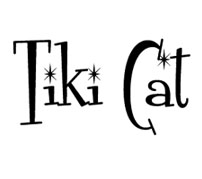
Tiki Cat Luau Chicken with Egg in Chicken Consomme Grain-Free Canned Cat Food
- Simple, highly digestible recipe
- Limited ingredient list
- Contains egg
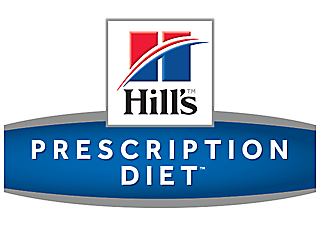
Hill’s Prescription Diet Gastrointestinal Biome Stress Digestive/Fiber Care with Chicken Dry Cat Food
- Clinically shown to promote healthy stool
- Whole chicken as the first ingredient
- Prebiotic fibers for digestive health

Nulo Freestyle Turkey & Chicken Recipe Grain-Free Canned Cat & Kitten Food
- Hydrating canned food
- Popular among cats with digestive issues
- Contains pumpkin, which may help reduce hairballs
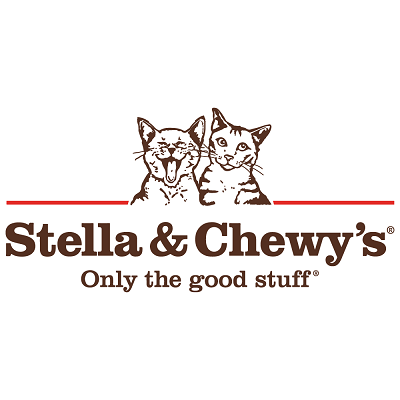
Stella & Chewy's Absolutely Rabbit Dinner Morsels Freeze-Dried Raw Cat Food
- Rabbit is a novel protein – ideal for cats with food allergies
- Pumpkin seed might help minimize hairballs
- Added probiotics
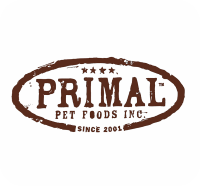
Primal Turkey Formula Nuggets Grain-Free Raw Freeze-Dried Cat Food
- Limited-ingredient food
- Highly digestible
Does Your Cat Have Hairballs? Watch This Video!
Why Trust Cats.com

Kirsten McCarthy / Cats.com
When selecting cat foods for testing, we prioritized recipes made primarily with animal ingredients and chose a variety of flavors and textures. Our selections were informed by in-depth research into the nutritional value of cat food for cats as well as our own experience having tested hundreds of products with our own cats.
We ordered these products at full price and tested them at home with our cats. While our cats provided their opinions on taste and general appeal, We performed an in-depth analysis of the product information and made our own observations. We also researched the brands, seeking information about their recall history, manufacturing practices, and general reputation within the cat-lover community. Here’s the full methodology behind our cat food ratings.
We consulted our team of veterinary experts to identify the key features of a cat food that promotes healthy digestion and potentially minimizes hairballs.
Our Veterinary Advisors
- Sarah Wooten, DVM, CVJ
- Chris Vanderhoof, DVM, MPH
- Sarah Reidenbach, DVM
- Chyrle Bonk, DVM
- Jamie Whittenburg, DVM
- Albert Ahn, DVM
- Elizabeth Youens, DVM
Are Hairballs Normal, and What Do They Have To Do with Diet?
Ingrid King, a veterinary journalist and creator of ConsciousCat.net, thought that regular hairballs were a normal occurrence until she saw the differences between her cats that were fed raw food and those that ate vet-recommended kibble.
Her first cat, Feebee, ate a vet-recommended dry cat food and hacked up hairballs a few times a week, despite regular doses of a petroleum-based hairball treatment. After learning more about feline nutrition, King switched her two cats Amber and Buckley to a grain-free canned diet. After the transition, yakking up a hairball became a rare event.
And Ingrid’s current cats, Allegra and Ruby? The two torties were raised on raw food and, when Ingrid wrote on the topic in 2012, had never vomited a hairball.
This story might be a string of coincidences, but it might also tell us something about the connection between hairballs and digestive health.
Hairballs normally pass through the intestines and leave your cat’s body through their poop. If this movement is interrupted or delayed, the hairs may fuse together with fat in the stomach, forming a trichobezoar. Typically, this triggers retching, which forces the mass through the esophagus and up out of your cat’s mouth.
Every time that a hairball “comes up” in this manner it indicates an anomaly in the digestive process. In a piece published in Veterinary Practice News, Gary D. Norsworthy, DVM, makes this surprising assertion:
“I am convinced that the vomiting of hairballs is a sign of chronic small bowel disease if it occurs twice a month or more in any cat; or if it occurs once every two months or more in shorthaired cats; or if it occurs in cats that are not fastidious groomers, i.e., presented with many mats in their hair coats or with heavy dandruff.”
In short, a hairball once a month or less is no reason for concern. Any more frequently suggests that something isn’t right.
The Best Cat Foods for Hairballs on the Market: Our Top 8 Picks
Best Cat Foods for Hairballs: Comparison Table
| Product Name | Royal Canin Feline Care Nutrition Hairball Care Thin Slices in Gravy Canned Cat Food | Hill’s Science Diet Adult Hairball Control Chicken Recipe Dry Cat Food | Smalls Ground Bird Fresh Cat Food | Tiki Cat Luau Chicken with Egg in Chicken Consomme Grain-Free Canned Cat Food | Hill’s Prescription Diet Gastrointestinal Biome Stress Digestive/Fiber Care with Chicken Dry Cat Food | Nulo Freestyle Turkey & Chicken Recipe Grain-Free Canned Cat & Kitten Food | Stella & Chewy’s Absolutely Rabbit Dinner Morsels Freeze-Dried Raw Cat Food | Primal Turkey Formula Nuggets Grain-Free Raw Freeze-Dried Cat Food |
| Primary Protein | Chicken | Chicken | Chicken | Chicken | Chicken | Turkey, Chicken | Rabbit | Turkey |
| Guaranteed Protein | 6.7% | 29.5% | 13% | 15% | 37.5% | 11% | 44% | 48% |
| Ash | 1.6 | 7 | 2.35 | 1 | 5.1 | 2.87 | N/A | 8.17 |
| Calcium | 0.27 | 0.91 | 0.52 | 0.30 | 0.75 | 0.65 | N/A | 1.77 |
| Phosphorus | 0.22 | 0.72 | 0.39 | 0.22 | 0.66 | 0.48 | N/A | 1.4 |
| Calories Per Ounce | 19 | 105 | 40 | 25 | 109 | 35 | 131 | 131 |
| Cost Per Day | $8.59 per day | $0.63 per day | $4.00 per day | $4.6 per day | $0.99 per day | $1.98 per day | $6.01 per day | $6.01 per day |
What To Consider When Buying Cat Food for Hairballs
Knowing that hairballs can be a symptom of digestive problems, feeding a cat with chronic hairballs is similar to feeding a cat with other symptoms of GI inflammation. Your goal is to give your cat food that aligns with their physiology. This means feeding your carnivorous cat a diet consisting primarily of meat and as few plant ingredients as possible, unless you’re trying a higher-fiber diet to help move hairballs through the intestinal tract.
Hypoallergenic Foods Might Help
Excessive hairballs are sometimes a symptom that a cat has food allergies. Food allergies that cause itchy skin can contribute to hairballs because itchy cats groom themselves excessively, which leads to cats swallowing more hair as they over-groom. Talk to your veterinarian about switching to a limited-ingredient or hypoallergenic food that’s free from the potentially allergenic ingredients.
Added Fiber Might Help
Most foods sold for hairball control are high-fiber products. Fiber additives help food and hair move through the GI tract.
If your cat has been eating a typical commercial cat food with ingredients like brewer’s yeast, wheat middlings, and dried beet pulp, they’re probably already getting more indigestible plant matter than any cat needs. Start by giving your cat an optimally digestible diet. If the hairballs persist, then you might try a diet with additional fiber.
Take your cat to your veterinarian before giving your cat a hairball treatment or changing their diet. Your vet will assess your cat’s overall health and determine the severity of the hairball problem. They will provide guidance on the best hairball treatment plan for your cat.
Helpful Tips for Minimizing Hairballs
1. Groom Your Cat Regularly
Cats ingest hair during self-grooming, so one of the best ways to prevent hairballs is by brushing the hair off your cat. Instead of entering your cat’s GI tract where it will turn into a hairball, the hair will instead go straight into the trash.
Click Here For Our Guide To The Best Cat Brushes And Deshedding Tools
2. Maintain a Healthy Coat To Prevent Excessive Shedding
A vibrantly healthy cat sheds less than their less-healthy counterpart. Here are a few ways to keep your cat’s coat strong and healthy:
- Identify and eliminate any food ingredients that are causing allergies or sensitivities
- Introduce an omega-3 fatty acid supplement. Species-appropriate sources of omega-3s include krill, salmon, and other fish. Avoid flaxseed oil and other plant-based sources of these fatty acids.
- Feed a nourishing diet rich in animal-sourced protein.
- Rule out any health conditions that could contribute to excessive shedding.
3. Consider Hairball Home Remedies and Supplements
Speak with your veterinarian first before trying any of these hairball treatments. Your vet can advise you on the most appropriate treatment for your cat and how to administer it.
Hairball treatments operate on one of two premises.
- The first is the fiber theory, which dictates that fiber supplementation helps to bind single strands of hair to food particles, hastening them on their journey toward the colon and into the litter box. Remember that more time spent in your cat’s body translates to more opportunities for the hair to fuse into a hairball.
- The second beliefis that oils, waxes, or petroleum jelly lubricate the hairs and prevent them from fusing into a trichobezoar.
Here are some commonly used treatments for hairballs:
Pumpkin
As a fiber source, pumpkin helps to carry hairs through the body. Canned pureed pumpkin is the most popular fiber supplement for hairball-prone cats, but some use other fiber sources like psyllium husk powder or coconut fiber.
Hairball-Specific Lubricants
These lubricants coat the hair in the digestive tract, helping it to pass through the system. They’re usually made from pharmaceutical-grade petroleum jelly, mineral oil, or a combination of the two.
Slippery Elm
This supplement lubricates the inner surfaces of the gastrointestinal (GI) tract, helping to encourage hairballs to slide in the right direction.
Egg Yolks or Egg Yolk Lecithin Supplements
Egg yolks contain two micronutrients that can help to minimize hairball problems: choline and lecithin. The choline component—acetylcholine—helps to increase peristalsis, the muscular contractions in the GI tract that propel food and hair down and out. Lecithin emulsifies the fat that binds hairballs together.
You can provide these nutrients by adding egg yolks to your cat’s food or by providing an egg yolk lecithin supplement. Remember to choose egg yolk lecithin rather than lecithin from other sources like sunflower or soy.
Butter and Oil
Some suggest that butter or oil lubricate hairballs, but butter and oil are digested and absorbed by the body before they can have any effect. Too much fat supplementation could bring your cat a whole new set of digestive problems. Butter and oil are not recommended to treat hairballs.
Frequently Asked Questions
Which cat food is best for hairballs?
The best cat food for hairballs is one that promotes overall digestive health. Added fiber can also help hair move through the digestive tract so it can be passed with the cat’s feces. Cats with food allergies or intolerances might get fewer hairballs if they eat a hypoallergenic diet, as skin inflammation can trigger excessive grooming, causing the cat to ingest too much hair.
Is wet or dry cat food better for hairballs?
High-quality wet cat foods contain a lot of protein and are low in carbohydrates, so they are highly digestible, which could help reduce hairballs in cats. It’s also possible that the extra moisture found in a wet cat food might help hair move through a cat’s system more easily. However, dry foods might contain extra fiber, which is thought to help hairballs pass through a cat’s digestive system.
What ingredient in cat food helps with hairballs?
Hairball formula cat foods generally contain added fiber and lubricant ingredients such as petroleum jelly to help hairballs pass through a cat’s digestive system.
What helps dissolve hairballs in cats?
Hairball foods and supplements help remove hairballs by helping them move through a cat’s stomach and intestines so they can be passed out of the body in the feces. Ingredients that help cats pass hairballs include fiber and lubricant ingredients such as petroleum jelly.



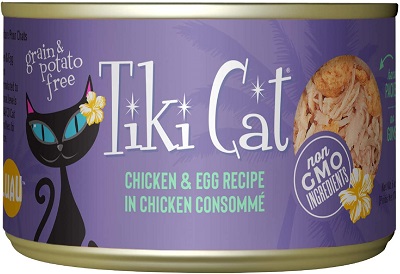

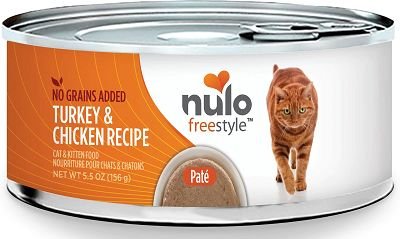
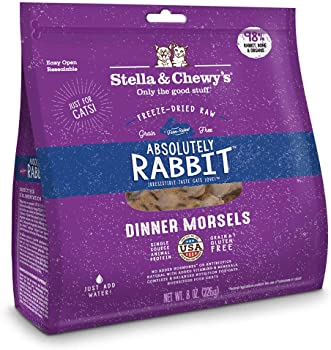
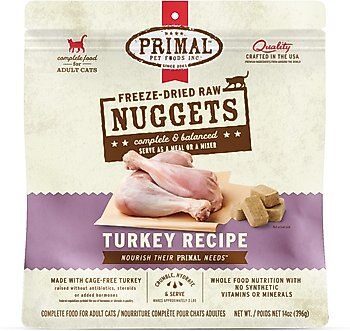










You are recommending that cats should ingest PETROLEUM jelly for hair balls, rather than olive oil or butter?
I understand that you would not want to give cats very much oil or butter, as it is rich, but ingesting petroleum products?
The reasoning here is that the petroleum jelly is non-digestible, which means that it will be more effective in encouraging hair to pass through the digestive tract.
After initial success then total crash’n’burn failure with Open Farm, your writeup convinced me to try Smalls for the first time! Unfortunately, the discount code no longer works. I’m guessing it inactivated sometime between the initial article and the Oct. 2023 update.
Thanks for letting us know that the code’s not working! I’ve flagged this for investigation and will get back to you with a working code if I can.
Really enjoyed video- more pets would have homes if medical care was reasonable! Thanks for your imput!
My cat is an indoor 14yr cat & seems to be allergic to fleas, she’s appx 7lbs so giving Capstar concerns me- I try to pull flea mats off when brushing her also tried organize flea drops to put on her back she seemed un interested in eating then next think here comes hairballs- can’t afford $350.00 vet bill after every episode – has to be a way to get under control- think fleas came in on lg area carpet a friend gave us & they had a lg dog- this seems to be when it started & yes rug is gone- any suggestions welcome- feed her canned Fancy feast – dry food doesn’t digest well ?
Hi there! I would recommend finding other ways to control fleas—this doesn’t seem like a sustainable approach long-term! We go in-depth on flea treatments in this guide.
My 10 year old cat will only eat dry food, I have tried in vain to introduce quality handmade “wet” food into her diet with absolutely no interest on her part, she will skip eating if there is wet cat food presented, even if it is mixed with her dry food in a small introduction. Given my dilemma, what dry cat food would you suggest, unbeknownst to me until just now I have been putting my trust in “Call of the Wild” cat food only to find out that it is not the quality food I thought it to be. I would be so grateful for your guidance.
Hi Tina,
Thanks for the comment! Since your cat insists on dry food only, I’d recommend upgrading to Dr. Elsey’s cleanprotein, Ziwi Peak, or Wellness CORE air-dried cat food. All are low in carbohydrates and contain primarily meat ingredients. If you’d like to read reviews of these brands and other top dry foods, please read our article on the top 10 best healthy dry foods on the market: https://cats.com/best-dry-cat-food
I know you’ve tried adding wet food to her dry kibble, but have you tried adding a little warm water to acclimate her to the idea of food that doesn’t crunch? Due to the risk of aflatoxin mold growth, this can be a little risky when feeding a grain-inclusive food, but mold is less of a concern if you’re feeding your cat a low-carbohydrate, meat-based food.
Hope you find a great product that both you and your cat love!
Best,
Mallory
I feed my cat Fancy Feast so could I mix the dry hairball remedy with the wet cat food?
Hello Gloria!
Most of the treatments mentioned above can be mixed into your cat’s wet food. You can mash dry psyllium husk powder directly into your cat’s food. The same applies for other powdered fiber additives.
If you use slippery elm bark powder, you will want to mix the dry powder with water to create a thick slurry before adding it to your cat’s food wet Fancy Feast.
Hope this answered your question!
– Mallory